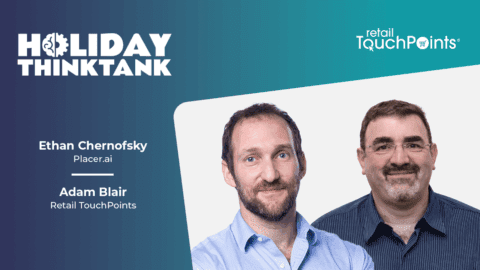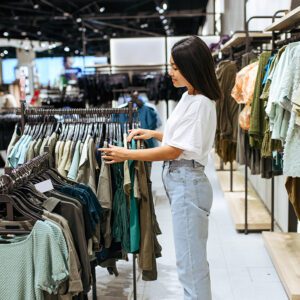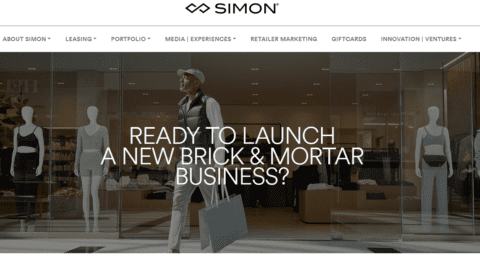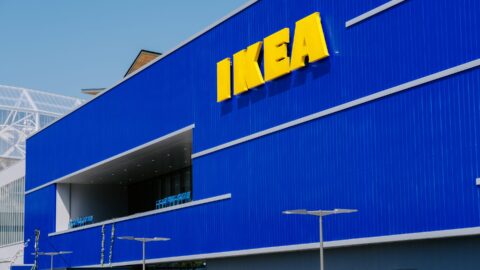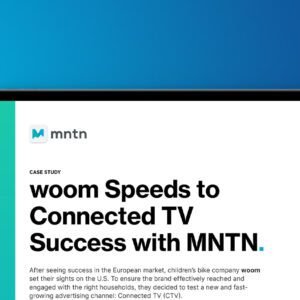Retailers will be forgiven if their heads are spinning after this turbulent year of near-constant shifts in the landscape thanks to both AI and tariffs. Now, the holiday season is upon us with a (perhaps predictably) unclear picture of where consumers’ minds are, because their heads are spinning too.
To help us all cut through the noise, we sat down with Nikki Baird, VP of Strategy and Product at retail technology provider Aptos, whose job it is to have her finger on the pulse of retail. Baird not only shares her take on where holiday spending is headed but also offers insight into why the rise of AI answer engines could end up making in-store shopping more rewarding and appealing than ever.
Retail TouchPoints (RTP): There are so many conflicting opinions and data points right now about how holiday is going to shape up. What’s your take?

Nikki Baird: Definitely I think that 2025 is way less certain than 2024, and that’s saying something, because even last year we were concerned about whether shoppers would run out of money. This year, all of those signs of strain are exacerbated. The level of uncertainty coming into 2025 is just out of control.
I was looking at some of the early results from the Prime Big Deals Day event, and Numerator was showing that once again, all of the top things that people were buying were not gifts. I think people were speculating that consumers would shift their [holiday] spending earlier, [but that doesn’t seem to be what happened]. Instead, they were buying Dawn dishwasher pods.
I think what’s going to happen this year is, while people will cherry-pick really good deals up front, consumers are going to play “deal chicken.” They’re betting that retailers actually have brought in more inventory and will not be short, and that there will be deeper discounts closer to the end of the holiday season. So, it seems like people are waiting.
Adobe’s forecast also spoke to that — they expect Black Friday/Cyber Monday to have the biggest deals of the season, so that’s going to cause a concentration of spend during that weekend, and I don’t think we’re going to see a huge pull-forward shift in consumer spending for holiday.
RTP: I think everybody keeps expecting, with everything happening this year, that there is going to be a moment when spending falls off a cliff, but that doesn’t seem to be happening. Do you think the cliff edge will come in Q1?
Baird: I thought that last year, and then we didn’t have the cliff [in Q1], so I was surprised. What I see that’s different this year is we have a generation — Gen Z — who, for the first time in a while, is saying, “We’re going to spend less on holiday this year.” That worries me, [as does] inflation and the softer job market. We had inflation last year, but we didn’t have as soft of a job market; that’s the other thing that is maybe different this year.
The NRF numbers showed that consumers were saying they are going to actually spend less on travel and experiences and décor to focus on essential gifts this year. So gift buying may end up being just fine, but if they don’t spend in those other areas, then the net for the holiday actually could be less.
RTP: Adobe also has said that with these new AI-powered shopping tools, consumers are more empowered than ever to wait for deals because they’re such a powerful way to track pricing and compare products. Do you see that playing into this?
Baird: I totally agree. AI is going to be probably one of the most-watched and also most-used tools among consumers this year, but right now that ball is in the consumers’ court. Yeah, you have Rufus on Amazon and Sparky on Walmart, those options are available to consumers, but if they’re starting in ChatGPT and saying, “I have $100 and five people to buy for. Here are each person’s interests — give me a list of gifts that meet that budget,” then retailers are going to lose. Yeah, they ultimately get the sale, but they’re getting it on the consumer’s terms, not on their terms.
RTP: Do you think these tools will have any impact on the in-store experience?
Baird: Well, it is possible for consumers in the store to say, “I’m standing in this Target” and ask a question, but we’re finding that delivering content through the store associate is a better use case for the kinds of retailers we serve, that is, fashion and smaller-format stores.
Typically, you [go to those kinds of stores] looking for help from a store associate; you’re not going there to avoid a store associate, you could just do that in the parking lot. So the idea of more relevant product recommendations, giving the store associate a summarized view of who this customer is and being able to pull together information that you normally have to go to multiple places to get, is pretty compelling.
If a customer says, “I really like this shirt, but I need it in a size eight,” then the store associate looks up that item to see if they have it. But if they don’t, and the associate wants to see if another shipment is coming in, that won’t show because it’s not received as part of the store inventory. You would have to go to your order management system. Whereas in a chat interface they can say, “Tell me everything I need to know about this inventory to see if I can get it for this customer,” and [the AI] can pull that information across various sources, but provide it in natural language so it’s much easier for everyone to absorb.
We’re looking at ways to bring together disparate pieces of information into a narrative [for associates] with AI. Also, it then gives us an opportunity to provide more derived characteristics, like the customer’s style profile, for example — things that can get the store associate up to speed really fast and that they can then use as their jumping off point for interacting with that customer in the store.
RTP: There’s been so much conversation about how ecommerce is going to get better with these AI tools, but in the future you’re envisioning it sounds like they will actually enhance the store experience as well.
Baird: Honestly, I see the store being the bigger beneficiary of AI. The big challenge has always been getting that information into the store associate’s hands so that they can use it — whether that’s customer information or inventory information or product information. Online is killing [the store experience] because you always have that power disparity between the store associate and the consumer. But now associates can at least approximate that level of expertise with the information that we can pull together and deliver to them, in the moment. A skilled store associate will know how to leverage that information naturally as part of the conversation with the customer.
The flip side of the conversation is that if things continue on the path they’re on right now, with people coming from an LLM rather than the retailer’s website, ecommerce will actually lose; your website becomes irrelevant. The only thing that’s important is your product detail page and your cart; everything else that you might try to do on your website, forget it, that’s all going to be absorbed and taken over in interactions that will be governed by the chat interface of the LLM.
All you’re going to get is the direct referral traffic to a product that a consumer selected without you participating in that process at all. [Because of that] I actually see stores winning in the AI race here.
RTP: One thing we have been hearing though is that the website, and really all the information you put out about yourself online, is still important because that’s what these chatbots are crawling to pull in their answers. It’s just that consumers won’t be interacting with it directly anymore.
Baird: But you lose the feedback loop on what’s working and what’s not, so you have no idea what went into the decision process that drove them to that product page: Was it this blog? Was it this video? Was it these great images, or are these images really bad and that’s why we lost out on this one?
RTP: So what should retailers be focusing on and doing to try to win these next few months leading into holiday?
Baird: This season is definitely going to be about capturing share of wallet and capturing it early. [Find ways to] incentivize those customers who think that they’re going to wait until retailers get desperate and really start marking things down. Maybe with messaging like: “These are guaranteed to be our best deals of the season, and if you see us offer a lower price, we’ll offer you the difference.” Sort of giving them the guarantee.
I also think retailers need to be very transparent about their inventory levels, because while retailers did try to stock up ahead of tariffs, there’s an upper limit to what they can achieve with that. If there are hot items, they’re not going to get more. Retailers themselves are saying they’re going to have narrower assortments this year, [because they didn’t want to] take risky bets on things. Many decided to be very conservative in their assortment, so there’s going to be fewer choices.
I think that transparency and building the FOMO [fear of missing out] for consumers is going to be key. Messaging along the lines of, “Hey, I’m not going to have more of this. If you wait until December, it may not be here.” Anything that really incentivizes consumers [to buy earlier rather than later].
For stores it really comes down to, can you get them in the store in the first place? Also, retailers are saying they’re not going to hire up as much for holiday this year, but if a consumer walks in the store and sees a huge line, they’re going to walk right back out. The patience level of consumers is just going down and down and down, so that’s another risk that I think retailers have to manage appropriately — making sure they’re not discouraging consumers right from the start when they walk in the door.
RTP: And to your earlier point, the store experience is perhaps more crucial than ever as retailers start to lose that direct engagement online.
Baird: Especially given that consumers seem to be saying that they’re not going to invest as much in other experiences this year. I certainly have nostalgia around the shopping trips I took with my mom back when Black Friday was fun. Building on that nostalgia, with free hot chocolate and things like that, could go a long way. I mean Gen Z has flat out told everybody, “We like going to stores and we go there for entertainment.” Lean into that, especially during this time of year. There’s lots of opportunity to just make that a more festive experience.






